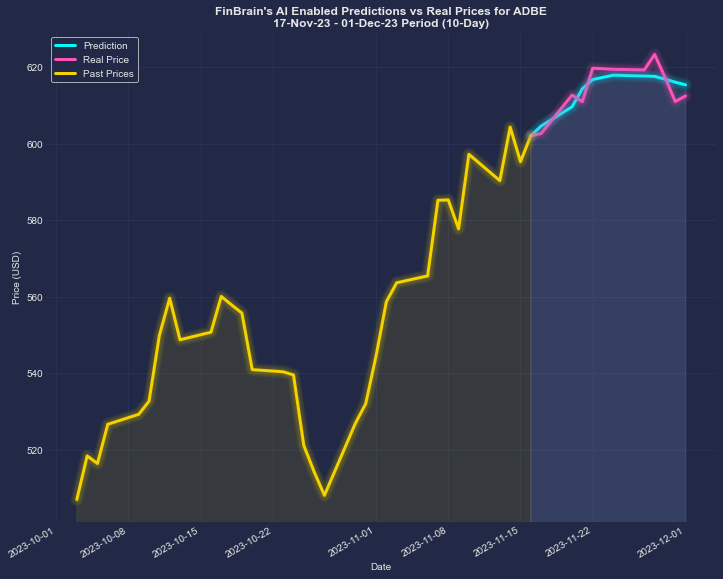20 Handy Ideas For Deciding On Ai Traders
Wiki Article
Top 10 Tips To Automating Trading And Monitoring Regularly Trading In Stocks, From Penny To copyright
In order for AI stock trading to succeed, it's essential to automate trading and ensure regular monitoring. This is especially important in markets that move quickly such as penny stocks or copyright. Here are ten tips to help you automate your trades, and ensure continuous performance through regular monitoring.
1. Clear Trading Goals
Tips: Determine your trading objectives like your returns and risk tolerance. Also, indicate whether you prefer penny stocks, copyright or both.
What's the reason? Clear objectives will guide the selection AI algorithms, risk management rules and trading strategy.
2. Trustworthy AI-powered trading platforms
Tip - Choose AI trading platforms that permit full integration and automation with your brokerage or copyright exchange. Examples include:
For Penny Stocks: MetaTrader, QuantConnect, Alpaca.
For copyright: 3Commas, Cryptohopper, TradeSanta.
The reason is that success with automation requires a stable platform that has strong execution abilities.
3. Customizable trading algorithms are the primary focus
Make use of platforms that let you develop or create trading strategies that are tailored to your personal method (e.g. trend-following and mean reversion).
Why: Customizable algorithm ensures the strategy aligns to your particular style of trading.
4. Automate Risk Management
Tip: Use the automated tools for risk management such as stop-loss orders, trailing stops and take-profit level.
What's the reason? These precautions help you avoid big losses in volatile markets such as copyright and penny stocks.
5. Backtest Strategies Before Automation
TIP Try your automated strategies on data from the past (backtesting) to evaluate performance before going live.
Why: Backtesting is a method to verify that the strategy will work in the real markets, and also reduces the chance of a poor performance.
6. Monitor performance regularly and make adjustments settings
Even though trading is automatic It is crucial to keep an eye on performance regularly in order to identify any issues.
What to Monitor How to Monitor: Profits and losses Slippage, profits and losses, as well as whether or not the algorithm is in line or not to current market conditions.
What is the reason? Constant monitoring allows for timely changes to the strategy should the market conditions alter. This ensures that it remains effective.
7. The ability to adapt Algorithms: Apply them
Tips: Choose AI tools that can adjust trading parameters in accordance with the latest data. This allows you to adapt the settings of your AI tool to the changing market conditions.
Why: Markets constantly evolve and adaptable algorithms can match strategies for penny stock and copyright with new trends, volatility, or other factors.
8. Avoid Over-Optimization (Overfitting)
A note of caution Be careful not to over-optimize your automated system based on past data. Overfitting could occur (the system performs very well in back-tests, but poorly under actual situations).
Why: Overfitting reduces the ability of a strategy to adapt to future market conditions.
9. Make use of AI to spot market anomalies
Use AI to identify abnormal market patterns and irregularities in data.
Why: Recognizing and adjusting automated strategies in the early stages is crucial to ensure that you do not miss a shift in the market.
10. Integrate AI into regular notifications and alerts
Tip: Set up real time alerts for market events or trade executions that are important and/or significant, as well as any fluctuations in the performance of algorithms.
Why? Alerts let you be aware of market trends. They also permit you to take action fast, particularly when markets are volatile (like copyright).
Bonus Cloud-based Solutions are Scalable
Tips: Make use of cloud-based platforms to boost the speed and scalability of your strategy. It is also possible to employ multiple strategies at the same time.
Cloud solutions allow your trading system work 24/7, 365 days a year, and without interruption. They are particularly useful in the copyright market because they don't close.
You can benefit from AI-powered trading by automating your strategies and monitoring them regularly. This will minimize risks and boost overall performance. See the recommended I thought about this for free ai tool for stock market india for site info including ai stock trading app, ai for trading stocks, best ai stocks, ai stock analysis, ai trader, ai for stock market, ai investing app, ai stocks, best ai trading app, smart stocks ai and more.

Top 10 Tips For Making Use Of Ai Tools For Ai Stock Pickers Predictions And Investments
To improve AI stockpickers and to improve investment strategies, it's essential to get the most of backtesting. Backtesting can provide insight into the performance of an AI-driven strategy under past market conditions. Here are 10 suggestions on how to use backtesting to test AI predictions stocks, stock pickers and investment.
1. Utilize high-quality, historical data
Tip: Make sure the tool you use for backtesting has comprehensive and accurate historic information. This includes prices for stocks as well as dividends, trading volume and earnings reports, as in addition to macroeconomic indicators.
What's the reason? Quality data will guarantee that the backtest results reflect actual market conditions. Incorrect or incomplete data could result in results from backtests being misleading, which will affect the reliability of your strategy.
2. Integrate Realistic Costs of Trading & Slippage
TIP: When you backtest practice realistic trading costs, such as commissions and transaction costs. Also, consider slippages.
The reason: Not accounting for the effects of slippage and trading costs could result in an overestimation in the potential return of the AI model. By incorporating these aspects the results of your backtesting will be closer to the real-world situations.
3. Test Different Market Conditions
TIP: Re-test your AI stock picker on multiple market conditions, including bear markets, bull markets, as well as periods of high volatility (e.g. financial crisis or market corrections).
Why: AI models may behave differently based on the market environment. Testing under various conditions can make sure that your strategy can be able to adapt and perform well in various market cycles.
4. Utilize Walk Forward Testing
Tip Implement a walk-forward test that tests the model by testing it against a a sliding window of historical information, and testing its performance against data that are not in the sample.
What is the reason? Walk-forward testing lets you to evaluate the predictive capabilities of AI algorithms based on data that is not observed. This provides a much more accurate way to evaluate the performance of real-world scenarios contrasted with static backtesting.
5. Ensure Proper Overfitting Prevention
Tip to avoid overfitting by testing the model using different times and making sure that it doesn't learn noise or anomalies from historical data.
What causes this? Overfitting happens when the model is tuned to data from the past which makes it less efficient in predicting market trends for the future. A well-balanced, multi-market model should be able to be generalized.
6. Optimize Parameters During Backtesting
Make use of backtesting software for optimizing parameters such as thresholds for stop-loss and moving averages, or size of positions by changing incrementally.
The reason: Optimizing parameters can enhance AI model efficiency. It is crucial to ensure that the optimization does not lead to overfitting.
7. Drawdown Analysis and Risk Management Integrate them
Tips: Use risk management tools such as stop-losses (loss limits), risk-to reward ratios and position sizing when back-testing the strategy to determine its resilience against huge drawdowns.
The reason: Effective Risk Management is essential for long-term profitability. Through simulating risk management within your AI models, you are in a position to spot potential vulnerabilities. This enables you to adjust the strategy and achieve better results.
8. Analyzing Key Metrics Beyond the return
It is essential to concentrate on other key performance metrics other than the simple return. They include the Sharpe Ratio, maximum drawdown ratio, win/loss percentage, and volatility.
Why: These metrics can help you comprehend the AI strategy’s risk-adjusted performance. If you focus only on returns, you may overlook periods with high risk or volatility.
9. Simulate different asset classes and strategies
Tip Rerun the AI model backtest on various kinds of investments and asset classes.
Why: Diversifying backtests across different asset classes lets you to test the flexibility of your AI model. This ensures that it can be used across a range of markets and investment styles. This also makes the AI model be effective with risky investments like copyright.
10. Make sure you regularly update and improve your backtesting method regularly.
TIP: Always refresh the backtesting model by adding updated market information. This ensures that it is updated to reflect current market conditions as well as AI models.
Backtesting should be based on the evolving character of market conditions. Regular updates are essential to make sure that your AI model and results from backtesting remain relevant, regardless of the market evolves.
Bonus Use Monte Carlo Simulations for Risk Assessment
Tip : Monte Carlo models a wide range of outcomes through conducting multiple simulations using different input scenarios.
Why is that? Monte Carlo simulations are a excellent way to evaluate the probability of a range of scenarios. They also give a nuanced understanding on risk, particularly in volatile markets.
These tips will assist you in optimizing your AI stock picker using backtesting. Through backtesting your AI investment strategies, you can be sure they are reliable, robust and able to change. See the most popular ai trading software advice for more recommendations including investment ai, ai stock trading bot free, trading bots for stocks, incite, ai trader, ai for trading, ai penny stocks, ai for investing, ai trading platform, ai trading software and more.
